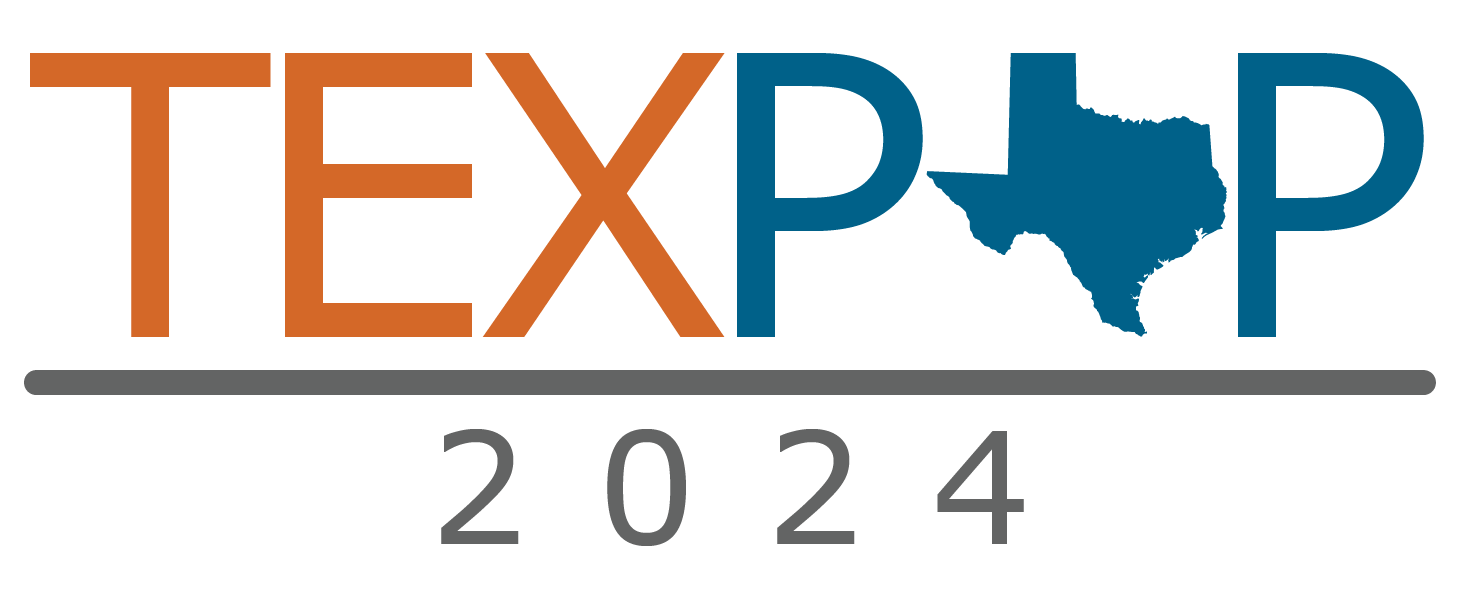Session I: Innovative Methods
Room 1.302D
3:30 pm-5:00 pm
Chair: Xi Pan, Associate Professor, Sociology, Texas State
Manuela Angelucci, Associate Professor, Economics, UT Austin
Depression, Pharmacotherapy, and the Demand for a Novel Health Product
Shuo Qi, PhD Student, Economics, Southern Methodist University
Identification and Estimation of Discrete Choice
Models with Spillovers Using Partial Network Data
Xiao Liu, Assistant Professor, Department of Educational Psychology, UT Austin
Toward a Demography of Student Debt: Race-Gender, Higher Education, and Household Finances Across Cohorts and Generations
Session J: Sexual and Gender Minority Population Health: Understanding Minority Stress Across the Life Course
Room 1.302E
3:30 pm- 5:00pm
Chair: Stephen Russell, Professor, Department of Human Development and Family Sciences, College of Natural Sciences (Affiliated), UT Austin
R. Andrew Yockey, Assistant Professor, Department of Population & Community Health, Internal Medicine & Geriatrics, University of North Texas Health Science Center at Fort Worth
Psychiatric Profiles and Adverse Childhood Experiences among Sexual Minority Individuals in the USA
Armin A. Dorri, PRC Graduate Research Trainee, Human Development and Family Sciences, UT Austin
Invariance of the SGM-ACEs Measure for Diverse Sexual and Gender Minority Adults
Ruby Charak, Associate Professor, Psychological Sciences, director of the UTRGV Adversities in Childhood and Trauma Studies (ACT) Lab, UTRGV
LGBTQ+ Identity Related Childhood Adversities, Revictimization, and Mental Health Challenges in South Texas college Students
Anton L.V. Avanceña, Assistant Professor, Department of Internal Medicine, Dell Medical School, UT Austin
The Economic Costs of Anti-Trans Legislation: A Review of Previous Analyses and Implications for Texas


